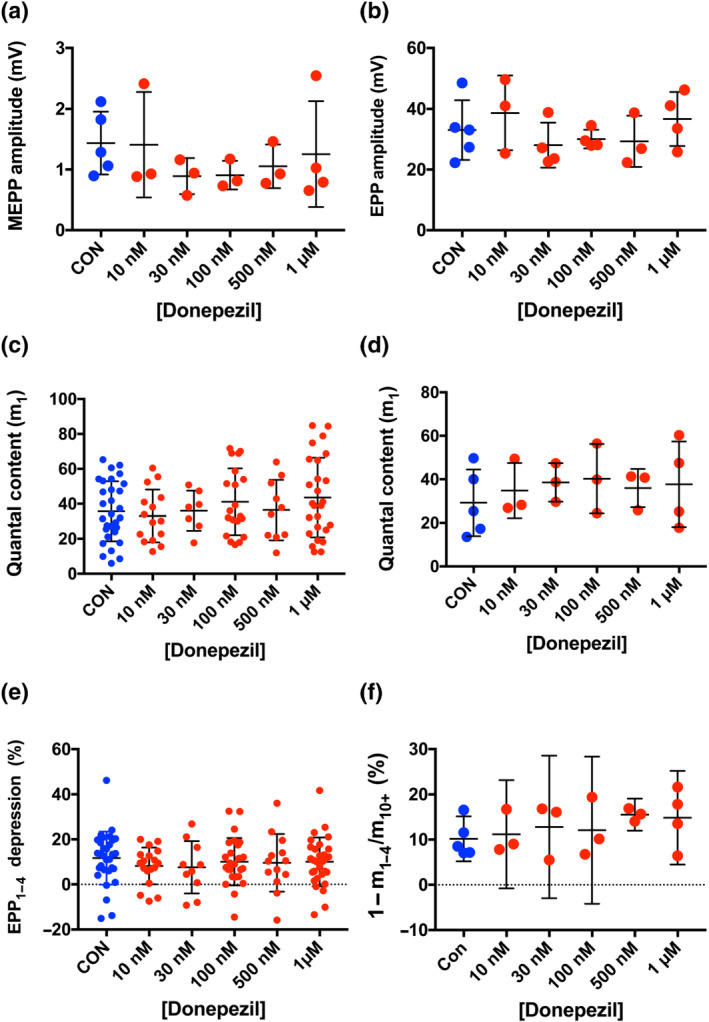FIGURE 5.

Endplate potential (EPP) quantal content is unimpaired by donepezil. (a) Mean miniature EPP (MEPP) amplitudes, corrected to a resting membrane potential of −70 mV. Each point represents the mean of recordings from 3 to 10 muscle fibres per mouse. There was no significant effect of donepezil over the range of concentrations indicated. (b) Mean amplitudes of the first EPP recorded in trains of 30, evoked at 1 Hz. Each point is the average of recordings from 3 to 10 muscle fibres per mouse, after adjusting EPP amplitudes for non‐linear summation and correcting to a resting membrane potential of −70 mV (see Methods). (c) Quantal content of the first EPP in each recording, obtained directly by dividing corrected EPP amplitude by the corresponding corrected mean MEPP amplitude (excluding giant MEPPs [gMEPPs]). Each point represents the estimate of quantal content from one muscle fibre. Bars represent mean ± SD. (d) Mean quantal content of initial EPPs recorded from preparations dissected from each mouse. Each point represents the mean quantal content from one mouse. There was no significant effect of donepezil on mean quantal content. (e) EPP depression calculated from the ratio of the fourth EPP to the first (EPP1–4) in trains of 30 EPPs evoked at 1 Hz. Each point represents data from one muscle fibre. Bars indicate mean ± SD. (f) Depression of EPP quantal content based on ratio of mean quantal contents of the first four EPPs (m1–4) to the mean quantal content of EPPs from the 10th to the last EPP (normally the last 20 EPPs) in the train (m10+). Each point is the mean depression per mouse based on recordings from 3 to 10 muscle fibres in flexor digitorum brevis (FDB) preparations from one mouse. Error bars show the means of these values with 95% confidence intervals.
